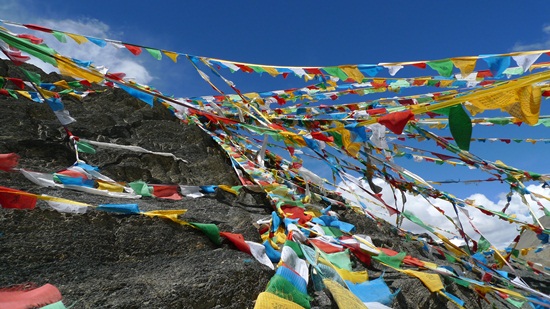Journey to the Roof of the World
For centuries, the mysterious Buddhist kingdom of Tibet tucked away in the Himalayan Mountains has held a unique imagination for the world. We’ve heard of this magical land with natural beauty, magnificent monasteries and faithful religious pilgrims. There are so many stories about Tibet, yet we know so little about it. I’ve always dreamt of going to Tibet because to me, it feels like a far-flung place that is almost unreachable, a challenge even. When we finally made plans to journey to the roof of the world, I couldn’t believe it, not even when we were on the train heading to Lhasa.
Before I write about our 10-days in Tibet, I would like to highlight some history and stories about Tibet. As much as it is one of the most beautiful places to visit, it is also one of the most controversial (if you’ve been following the news).
10 facts about Tibet
- The invasion of Tibet began in 1949. Chinese occupation has resulted in the deaths of at least hundreds of thousands of Tibetans, the destruction of over 6,000 monasteries, nunneries and temples, and the imprisonment and torture of thousands of Tibetans.
- The Dalai Lama, Tibet’s political and spiritual leader, fled Tibet in 1959 to Dharamsala, India, followed by over 100,000 Tibetans and established the Tibetan Government-in Exile. In 1989, he was awarded the Nobel Peace Prize for a steadfast dedication to non-violence, and the highest US civilian honor, the Congressional Gold Medal, in 2007.
- Tibet, before occupation, was a nation with an established sovereign government, currency, postal system, language, legal system, and culture. Prior to 1950, the Tibetan government also signed treaties with foreign nations. The Chinese government claims that Tibet has always been part of China, yet its invasion of Tibet resembles imperialist aggression that China accuses other powers of exhibiting.
- The “Tibetan Autonomous Region” (TAR) is not Tibet, nor is it autonomous. The Chinese government has divided historical Tibet into one region and several prefectures and counties, with the TAR encompassing only the central area and some eastern regions of Tibet.
- The basic freedoms of speech, religion, and assembly are strictly limited, and arbitrary arrests continue. There are currently hundreds of political prisoners in Tibet, enduring a commonplace punishment of torture.
- The Chinese government increasingly encourages Han Chinese to migrate to Tibet, offering them higher wages and other inducements. This policy is threatening the survival of Tibetan people. Tibetans are becoming a minority in the TAR. Yearly, thousands of Tibetans still flee from Tibet, making the treacherous journey over the Himalayas into a world of exile.
- Historical Tibet was a vast country, with an area roughly equal to Western Europe. Tibet is the source of five of Asia’s largest rivers, which provide water for two billion people. Tibet’s fragile environment is endangered by Chinese strip-mining, nuclear waste dumping, and extensive deforestation.
- The Chinese government claims to have “developed” Tibet, with “developments” mainly benefiting the new majority Chinese, not Tibetans. China, neglecting education and healthcare, has spent millions of dollars building infrastructure; many roads, buildings, and power plants directly support heavy militarization, allowing China to maintain Tibet as a police state.
- The Chinese government aggressively seeks foreign investment for its “Go West” campaign, with use of these international funds to develop Tibet as a resource extraction colony and consolidate regional control. Foreign investments in Chinese companies legitimise China’s colonisation and exploitative projects that harm Tibet.
- The United Nations and international community have done very little to address the core issue of China’s illegal occupation of Tibet. China represents an enormous market and cheap labour force, and its associated businesses have such a strong lobby that officials are reluctant to take substantive measures. Since western countries adopted policies of so-called “constructive engagement” with China in the 1990s, the human rights situation in Tibet has only deteriorated. In November 2008, the UN agreed with Free Tibet’s report on torture, clarifying that it believes that torture is ‘widespread and routine’ in Tibet.
Tibetan Uprising in 2008
In March 2008, there were the largest protests against Chinese rule for 50 years. The protests were sparked by China’s increasing stranglehold over all forms of Tibetan life, especially religion, and Tibetans feeling that they are second class citizens in their own country. The protests were brutally suppressed by the Chinese authorities and scores of unarmed Tibetan protesters were shot dead by Chinese armed police in Lhasa. More than six thousand Tibetans were detained in the aftermath of the protests, many were tortured and hundreds still remain unaccounted for. Two Tibetans were executed in October 2009 for their alleged role in the protests.Since the 2008 protests the situation in Tibet has changed dramatically:
- Restrictions on travel to many parts of Tibet for both journalists and tourists remain in place.
- Freedom of movement is restricted and communications are severely curtailed.
- There are detentions, arrests and a general culture of fear.
- There is a heavy military presence on the streets of many Tibetan towns. There are also roadblocks, security cameras and soldiers with guns on the roof tops in Lhasa.
- Hundreds of plainclothes police and informers watch the crowds.
(Facts plucked from freetibet.org)
This is just the gist of the story. I strongly encourage everyone to read more about the whole Tibet-China controversy, just search online!
When preparing for our trip, we did loads of research. We were aware of everything that is happening in Tibet and the recent protest in Sichuan Province (which used to be part of ancient Tibet). As foreigners, we’re not allowed to travel independently in Tibet. We must hire a tour guide with a driver for the entire duration of our trip. All visitors are also required to apply for a special permit to enter Tibet (together with a valid Chinese visa) and we need to go through an agent to get this done.
Of course, it’s easy when you have a travel package – everything is taken care of, but that means it’s much more expensive than independent travel and also less interaction with the locals. The reason for this is simple: the Chinese government wants to control the number of foreigners entering Tibet and limit their interaction with local Tibetans, lest we “poison” their minds with Western ideologies (ie: free Tibet/proclamation of human rights/etc). They cannot afford for the 2008 uprising to happen again, ever.
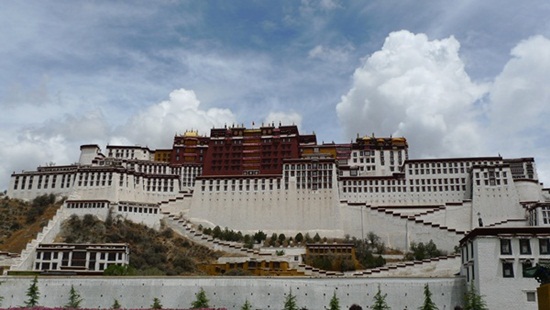
The government’s paranoia can be clearly seen especially in Lhasa, the capital city of Tibet. Police and army personnel are stationed all over the place, perhaps 500m within each station. A group of 5-6 soldiers will be marching along the roads, all the time, from day to night. We thought this was a tad too much, making everyone feeling really uncomfortable with their presence. We’re also not allowed to take any photos of them. They once marched pass me while I was snapping away and ordered me to shoot later. The positive thing is, foreigners are allowed to roam freely in Lhasa city on their own without a tour guide.
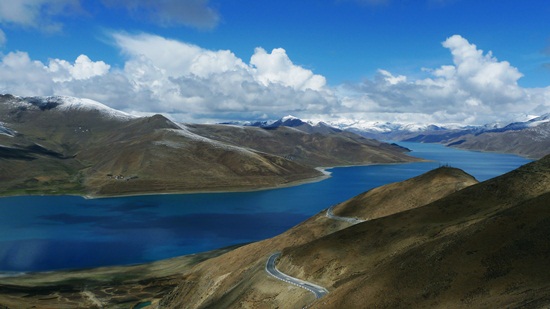
Once you’re out of Lhasa, you must be accompanied by your tour guide at all times. There are lots of checkpoints along the way (didn’t bother counting). The first is a speedcheck where the driver is issued a ticket at Point A and he must arrive in Point B after a stipulated amount of time. If he arrives earlier, it means that he has been speeding and the fine is 100 Yuan for each minute. Ridiculous ain’t it? The second is a security check where our tour guide must produce his license and valid documents of the traveling group. At times, we were required to personally queue up with our passports and they will scrutinize our names and photos, just to ensure that we’re the same people as stated in the permit. Hassle, but definitely an experience.

After spending 10 days in Tibet – from the modernized Lhasa city to the rugged Everest Base Camp, I am still divided on whether one should visit Tibet. To be honest, I was disappointed that the major towns (Lhasa, Gyantse, Shigatse) looked just like any other Chinese cities – Uniformed buildings erected hastily, in what Beijing calls “developing” Tibet. Not charming, at all.
The real adventure began once we got out of the city and into the wilderness. I must say, the scenery took my breath away. I stood in awe looking up at Mount Everest, the highest mountain in the world (or Mount Qomolangma to the locals). I watched as the sun went down on its iced-tip, even when I was freezing outside in the cold thin air, not being able to feel my face nor my fingers, while snapping away furiously on my camera. It was magical! Peaceful and spiritual to a certain extent.
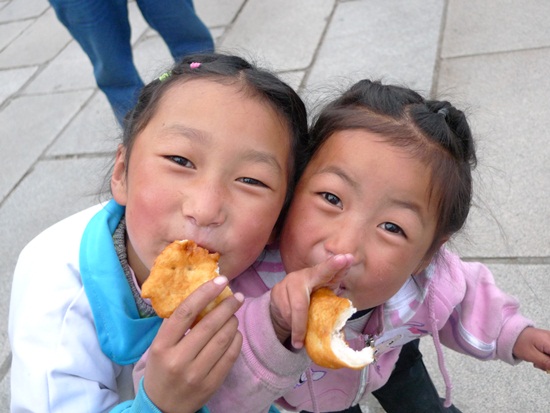
Although we were on a “tour”, we made full use of our time trying to get to know the locals. Our tour guide, Kelsang did an awesome job telling us stories and sharing the local culture with us. It’s very rare for me to give a tour guide rave reviews, but he’s definitely a gem. He even got his Mom to make us real good yak butter tea and purposely brought it over in a flask on our last night in Tibet. Not forgetting our macho driver, Benbar who got us safely to all our destinations and bonded with us over time. Whenever we had the chance, we would talk and chat with the people we met along the way and Tibetans are really friendly. Eventhough language seemed to be a problem at times, they tried their best to ensure we’re well-taken care of.
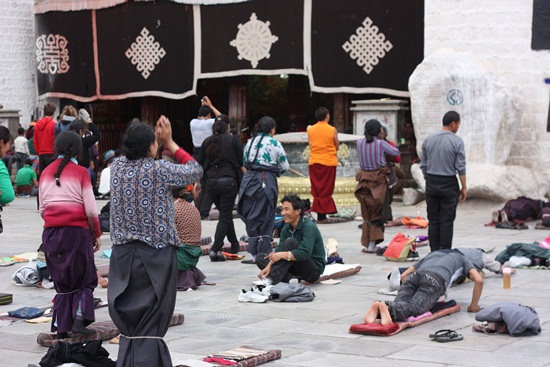
Similar to my views on Myanmar, I would encourage one to travel to Tibet.
- When we witness the situation in Tibet firsthand, we’re able to inform others of our experience when we return
- Visitors provide a window to the outside world for Tibetans because the media is government-controlled
- Ensure that your money is channeled back to Tibetan-run businesses
- Ask for a Tibetan tour guide who knows the place best
- Immerse yourself in the local culture and savour their cuisine (it took us 5 tries before finally falling in love with yak butter tea – made by our guide’s Mom)
- Learn the local language and smile – it really makes their day (the ladies will often giggle)
- When visiting monasteries, leave a donation as this will help with their upkeep
- Do not carry or handout photos of the Dalai Lama as this is illegal. Similarly, if you wish to discuss politics, do it discreetly away from the “Big Brother” watching over
But of course, it is an individual and conscious decision at the end of the day. I totally disagree with the way the Chinese “liberated” Tibet, but the more I learn about this mysterious place, the more I feel like going back to Tibet – to places we’ve not explored during this trip. I will be writing separate posts about the places we’ve been in those 10 days. Coming up!
